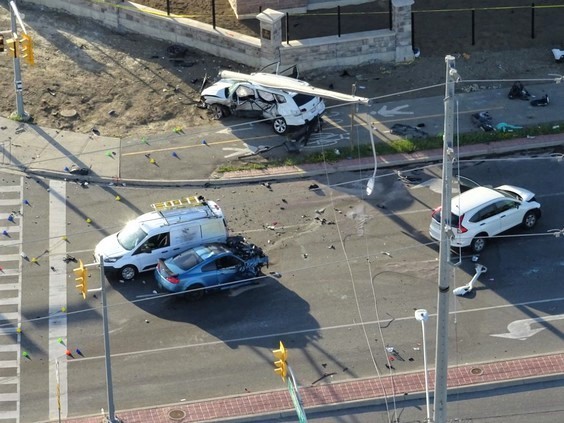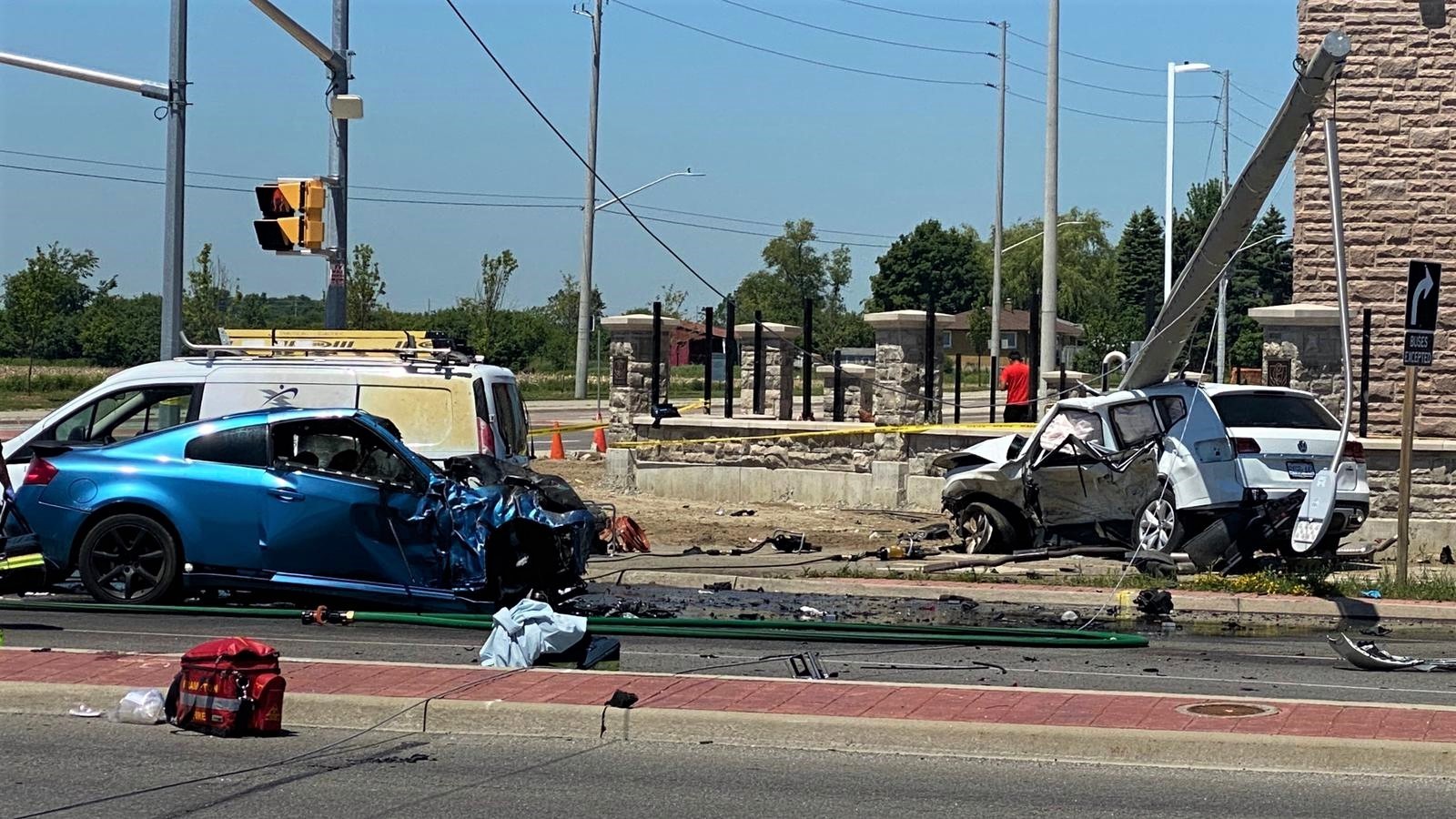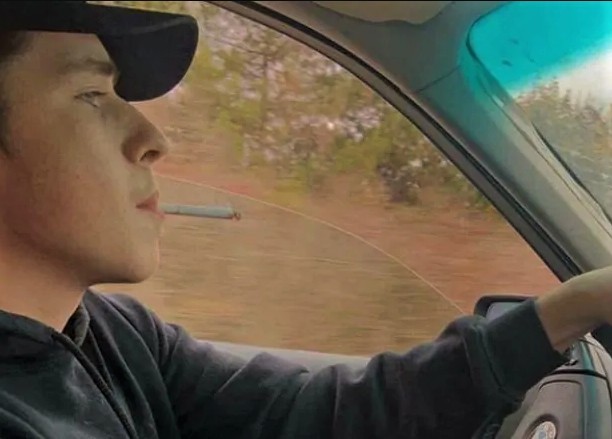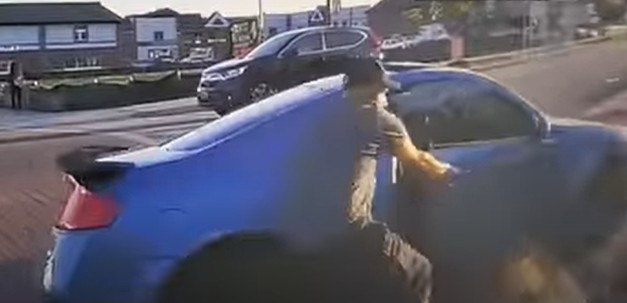
Driver who killed Caledon family wants evidence of impairment tossed: shows he had 8-times the legal limit
Defence lawyers for Brady Robertson, the Caledon man responsible for a crash that killed a mother and her three daughters on a Brampton boulevard last year, are attempting to have crucial evidence in the case thrown out, alleging Peel Regional Police improperly searched Robertson’s vehicle days after the crash, and obtained medical samples without a proper warrant.
Robertson, now 21, has filed an application claiming his rights were violated, specifically constitutional provisions that protect against unreasonable search or seizure under the Canadian Charter of Rights and Freedoms.
Shortly after 12 noon on June 18, 2020, Robertson, who was 20 at the time, sped down a major Brampton thoroughfare near Torbram Road and Countryside Drive. According to a reconstruction of the scene and computer data from his vehicle, he was going about 135 kilometres per hour when he approached an intersection, swerved out of his lane, then turned back toward the crossing in his blue Infiniti G35, which was not registered, and violently slammed into the driver side of a Volkswagen Atlas driven by Karolina Ciasullo. The 37-year-old Caledon mother was driving with her three young daughters: six-year-old Klara; three-year-old Lilianna; and one-year-old Mila. All four succumbed to their injuries.

An image posted to Facebook shows the aftermath of the horrific June 18 crash.
Robertson pleaded guilty to four counts of dangerous operation of a motor vehicle causing death. He has pleaded not guilty to four other counts of impaired driving and another charge of dangerous operation of a motor vehicle in relation to an incident that took place two days prior, when a blue Infiniti drove up onto a Caledon sidewalk close to Robertson’s residence and the scene of the tragic crash two days later. A video of the incident shows the driver asleep or passed out behind the wheel, but he snaps to and speeds off as onlookers attempt to stop him.
Despite the similarities of the images captured in the video on June 16, 2020 and video footage from a gas station two days later, showing Robertson shortly before he killed the Ciasullo family, his defence lawyers are arguing the video quality showing the earlier incident is not strong enough to prove it was him behind the wheel passed out driving onto the sidewalk.
On Monday, Justice Sandra Caponecchia heard from Craig Bottomley and Mayleah Quenneville, Robertson’s lawyers, who argued the search of the vehicle six days after the fatal crash was not handled properly.
According to testimony from Peel Regional Police officers, an “inventory search” was conducted six days after the crash in order to collect any valuables belonging to Robertson that may still be in the car. Robertson’s lawyers argue that because six days had passed since the accident and the car had been sitting in the tow yard with a broken windshield, the proper time to conduct such a search had expired. The lawyers also argued police were searching for evidence to prove Robertson was imparied, without a proper warrant.

Karolina Ciasullo with her three young daughters: six-year-old Klara; three-year-old Lilianna; and one-year-old Mila.
(Image from GoFundMe)
“They did not make the decision to inventory search the car until it was an investigative step,” Quenneville said. “It was clearly at that point police were looking for evidence of impairment, they weren’t concerned with safeguarding valuables and that means the inventory search isn’t justified.”
According to police testimony, the search could not be conducted at the roadside, or immediately after because the car had been engulfed in flames. The trial also heard that the delay was due to police understaffing and the scope of the case.
During the search, conducted by Staff Sgt. Gary Carty, the investigation’s major case manager, he discovered four white pills in the glove box, determined to be fentanyl, and a baggie containing 8.5 grams of cannabis.
The Crown, Patrick Quilty, argued the search was justified on two grounds: the lawful seizure of the car under the Highway Traffic Act allows for the inventory search — for which he argued there is no expiry date — and police were lawfully allowed to search the car in relation to Robertson’s arrest, and the possible criminality of his conduct, which occurred the same day.
Police are able to search an individual or their vehicle without a search warrant if that search in some way relates to their arrest. For example, police are allowed to search a vehicle at the roadside to look for drugs or alcohol if a person is being arrested for impaired driving. This is known as a “search incident to arrest”.
The defence is arguing the search was not valid in connection to Robertson’s arrest at St. Michael’s Hospital six days after the crash because he was not arrested in his vehicle, meaning the car should not be subject to a search, in the same way someone’s home would not be subject to a “search incident to arrest” if they were arrested in a public space.
Crown attorney Quilty argued that the proximity in this case simply doesn’t matter.
“In this case they’re searching the very vehicle involved in a dangerous driving offence,” he said, arguing the location of the car at the time of the search and Robertson at the time of his arrest were not relevant.
He argued that if the situation had been different, and Robertson was arrested at the scene, police would have had grounds to search the vehicle in relation to a dangerous driving offence to search for things like suspended license documents or even drugs and alcohol.
This is no different, it was argued, in a case where the search of a vehicle has to be conducted at a different location and at a later date, due to the circumstances.
While conducting an inventory search — which is simply to ensure the safety of valuables still in the car while it is in police custody — Quilty argued police cannot, “cover their eyes and ears,” when it comes to evidence.
“Finding evidence doesn’t mean that was their purpose,” Quilty stated.
If Caponecchia finds police acted unlawfully by conducting the inventory search days later, the evidence of drugs found in the vehicle could be tossed out.
The defence also argued PRP didn’t have a justifiable reason to obtain medical information from Robertson. When the accident occurred, Robertson was transported first to Brampton Civic Hospital where staff took a blood sample. Police filed a warrant for the sample and results, which Sgt. Carty collected. He was also given a urine sample, which he took to forensics to be tested. The Crown has conceded that the urine sample was an “over seizure” and breached Robertson’s rights, but it is not severe enough to result in all the evidence being thrown out.
Justice Caponecchia appeared to agree.
“I just don’t have any evidence about what they did with the vile that breached his reasonable expectation of privacy,” the Justice stated.

Brady Robertson
(Image from Facebook)
The urine samples did not show traces of THC, but did contain fentanyl. However, the trial heard previously that the fentanyl in Robertson’s system could be a result of his treatment in hospital. The Crown is clearly relying on the blood samples, specifically, and the amount of THC detected, which was 8-times the legal limit, according to the first blood sample taken after the accident.
Forensic scientist Betty Chow, testified that blood drawn at Brampton Civic, roughly an hour after the June 18 crash, found Robertson had THC in his system. The legal limit allows for five nanograms per millilitre of blood. Robertson had 40 nanograms per millilitre of blood (the range of error is plus or minus three nanograms).
A second examination was conducted on blood drawn at 3:21 p.m when he had been transferred to Toronto. The analysis found 15 nanograms of THC per millilitre of blood (the error range is plus or minus one nanograms). Less than 1.3 nanograms per milliliter of fentanyl was also detected.
If the Justice rules the search of the vehicle was improper, the defence argued evidence of the drugs that were found in the car should be thrown out, and the evidence from the blood and urine samples should also be omitted because suspicion of impairment that led to the arrest came after the allegedly improper search of the vehicle six days after the crash.
Robertson is also fighting a fifth dangerous driving charge relating to an incident that occurred on June 16, 2020, two days prior to the collision that killed the Ciasullo family. Witnesses and video footage detail a blue Infiniti without a front licence plate, drove up onto a Caledon sidewalk close to Robertson’s residence. The driver appeared to be asleep or passed out at the wheel. Bystanders tried to stop the car, but the driver came to and sped away.
The defence argued there is a lack of evidence proving it was Robertson behind the wheel. Witnesses described the man in the car as approximately 20, white and skinny or slim and wearing a baseball cap. Defence lawyers said this is not definitive enough to prove it was Robertson, but did not provide any evidence of another slim, 20-year-old white man in a ballcap who was driving Robertson’s car when it apparently drove up onto the sidewalk two days before the fatal accident.
Quilty said it was the same car with the same licence plate and pointed to a video, showing the Infiniti driving over the curb and onto the edge of the sidewalk, with a man behind the wheel wearing a baseball cap. He then pointed to a video taken at a Shell gas station on June 18 prior to the fatal collision where Robertson is wearing a similar baseball cap, matching the description from bystanders. The Infiniti in the earlier incident was near Robertson’s residence and drove toward it after speeding away from the sidewalk. The erratic driving by a man described as looking like Robertson, in the car he owned, next to his home is too much evidence to be coincidence, the Crown argued, pointing out the defence did not provide any evidence of another individual driving the same car two days prior to the deadly crash.
“When you consider it with all the circumstantial evidence, I would submit that your Honour can find beyond a reasonable doubt that Mr. Robertson was the driver,” Quilty said.

A man tries to stop the blue Infiniti after it drove onto the sidewalk in the June 16 incident.
(Screengrab from Twitter)
Defence lawyer Craig Bottomley argued “there’s too many differences” between the two incidents to simply assume it is the same driver. He pointed to the different locations, different time of day and the fact the fatal collision involved a driver who would have run a red light whereas the June 16 incident appeared to involve a driver who was initially stopped at a red light. Bottomly also suggested the dangerous driving behaviour is not unique, noting “you see it everywhere” on Ontario roadways and unlike the June 16 incident, the fatal collision involved a driver with “a considerable amount of control while running into the vehicle.”
That collision did not involve a “considerable amount of control” and Robertson has already pleaded guilt to four counts of driving dangerously. Both incidents involved a driver who did not have control of the vehicle.
A witness described the driver in the June 16 incident as appearing to have a “medical episode” which the defence argued suggests someone engaging in “not great decision making” as opposed to being impaired.
Because a witness described the driver as having a medical episode (as opposed to being passed out – it’s unclear how the witness made the distinction) the defence believes that is why the car drove onto the sidewalk and shouldn’t be linked to the dangerous driving charge or the collision that took place two days later.
“There is no calling card here, there is no signature that this must have been the actions of a single driver,” Bottomly stated.
He did not provide any evidence of what would have caused a ‘medical episode’ or any history Robertson has of passing out due to a medical condition.
Justice Caponecchia will give her ruling on whether she will exclude blood samples as evidence by September 17, and if Robertson is guilty of impaired driving.
Email: [email protected]
Twitter: taasha__15
COVID-19 is impacting all Canadians. At a time when vital public information is needed by everyone, The Pointer has taken down our paywall on all stories relating to the pandemic and those of public interest to ensure every resident of Brampton and Mississauga has access to the facts. For those who are able, we encourage you to consider a subscription. This will help us report on important public interest issues the community needs to know about now more than ever. You can register for a 30-day free trial HERE. Thereafter, The Pointer will charge $10 a month and you can cancel any time right on the website. Thank you.
Submit a correction about this story


